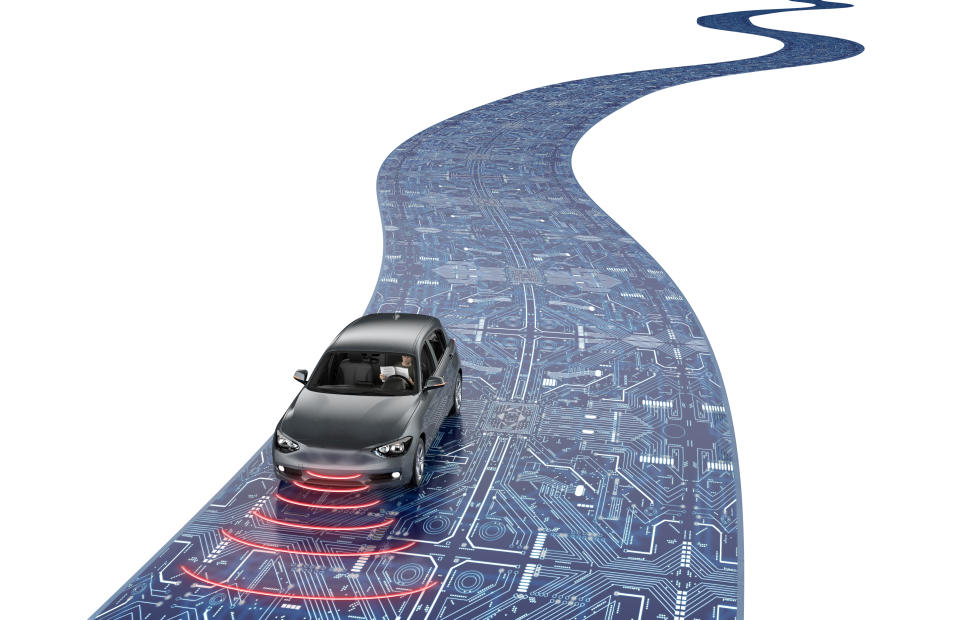How artificial intelligence is affecting and improving transportation
A few years ago, the buzz over self-driving cars evolved from science fiction to an actualized game plan for the coming years, and now, it's even closer to realization. Today's cutting-edge automobile models boast integrated artificial intelligence systems that can handle the road on their own, and also work in myriad ways to make the driving process safer and easier.
We've teamed up with Toyota – makers of the Concept-i automobile that was unveiled at CES 2017 – to focus on how exactly these exceptionally smart cars will change driving, and it's no exaggeration to call it a complete overhaul. It seems like the only thing these cars don't do is fly. And for that, there's always next year's model.
Levels of Driving Automation
In 2014, SAE International established International Standard J3016, which created an overarching system used to define gradients in automated driving. Grading vehicles on a scale from 0 (no automation) to 5 (high automation), the standard makes a crucial distinction between Level 2 and Level 3, where the car takes on the task of monitoring the environment.
The standard applies to the Concept-i specifically, as Toyota has set a goal of reaching Level 4 compliance (where the vehicle handles all driving tasks in certain modes) by 2020. That doesn't mean you're stuck with a car that does the work for you, though – these AIs can incrementally take control of the car or transfer it, so optimization goes a lot further than an on/off switch.
Personalization

What sets an artificial intelligence vehicle apart from simple autopilot is that AI can – and does – learn. Toyota's Concept-i comes equipped with an AI named "Yui" (pronounced "you-ee") that gets to know the driver better as he or she uses the car more frequently. The driver's preferences and habits become more familiar to Yui, and in turn, the AI can integrate features that make driving unique to every user.
Personalization will also be an important factor in other forms of travel. Multiple outfits have been experimenting with using AI copilots for non-commercial flights, hoping to take some of the stress of flying off a human crew. With the human-machine pairing in the cockpit, one can get to know the other and do what they can't, and vice versa.
Safety
The automotive experience that all drivers want is about a lot more than just convenience – when it comes to getting behind the wheel; nothing is more crucial than safety. As cars become more and more technologically advanced, the expectation for safety increases. Humans do not tolerate crashes due to technical failures.
Even though taking human judgment out of the equation feels like a bridge too far for most motorists, it's already proving to be effective. The Defense Advanced Research Projects Agency (DARPA) has been testing AI air traffic control for years, with analysts hypothesizing that not only can it produce a safer airport environment, but also one where traffic is less of an issue. Likewise, Yui can make driving safer and easier by taking increased control of driving functions or engaging tasks to keep the driver's focus up.
Warmth

While safety and ease are of the utmost concern, driving should still be a pleasurable experience. At the heart of what makes the Concept-i special is its "Kinetic Warmth" – a term that Toyota has coined to describe a user experience that's more hospitable than one that a conventional vehicle could offer. On the inside of the car, a dashboard that extends around the vehicle via digital lines acts as a fully-enveloping conduit for Yui to transmit information with lights, sounds, and even signals that appeal to the driver's sense of touch. This dashboard creates a driving environment that's more calm and comforting than ever before– and if that's not enough to make you grin, the headlights also blink, Lightning McQueen-style.
Accessibility
Finally, one of the most important benefits of linking up artificial intelligence with transportation comes with the greater accessibility and comfort afforded to drivers. Currently, there are a variety of options available to make operating a vehicle more user-friendly for elderly drivers or drivers with disabilities, but none compare to what an AI can potentially offer.
Artificial intelligence is already being used to aid in personal conveyance, as seen in WHILL's Model M, an alternative to the traditional wheelchair. Not only does Model M offer advanced maneuverability based on an analysis of surrounding conditions, but WHILL is working on a network of sensors to monitor users' overall wellness.
There is enormous potential for artificial intelligence to improve transportation. Check out Toyota's Concept-i to learn more about how AI is pushing the boundaries of driving to the next level.
